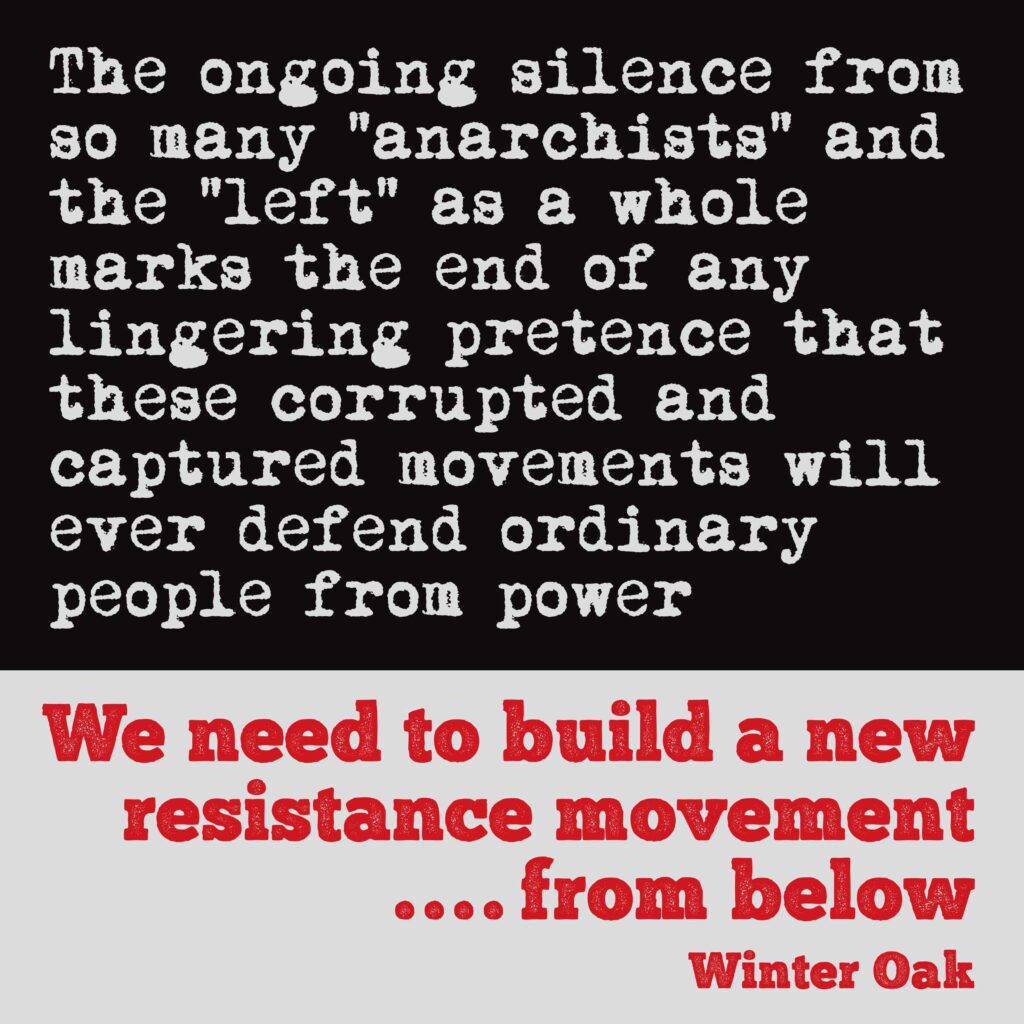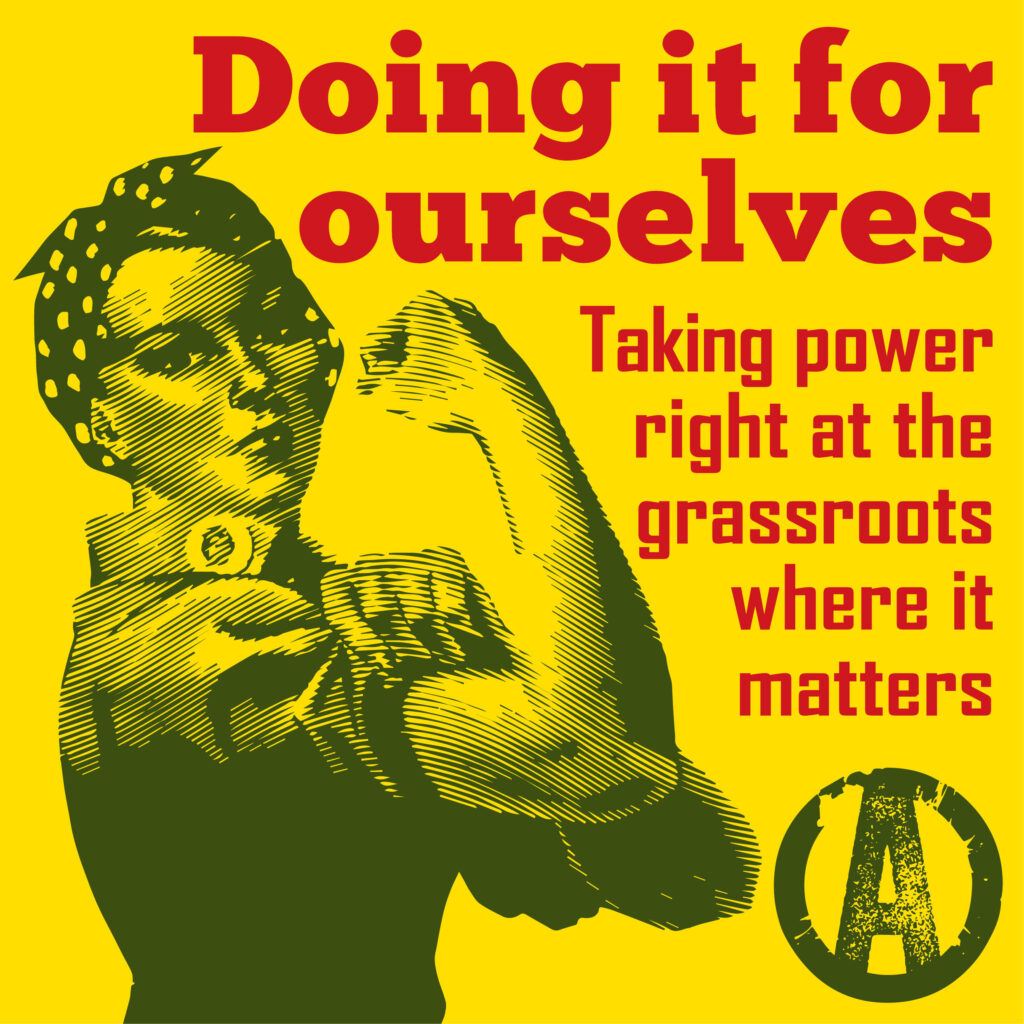
These are just some of the many posts we’ve written about grassroots activism in its various forms and how working for change at the base in our communities is the essential foundation for any meaningful, radical change:
DIY community activism:) 30.6.22
A fluffy project? Nope, not us… 23.6.22
We CAN make a difference and DON’T let anyone tell you otherwise! 7.6.22
Action for change in our communities happens because residents see a need and have lost faith in the ability or willingness of the authorities to act. There are plenty of examples where residents are doing this without any prompt from a movement or an organisation. What follows is a mix of examples from Essex and Bristol…
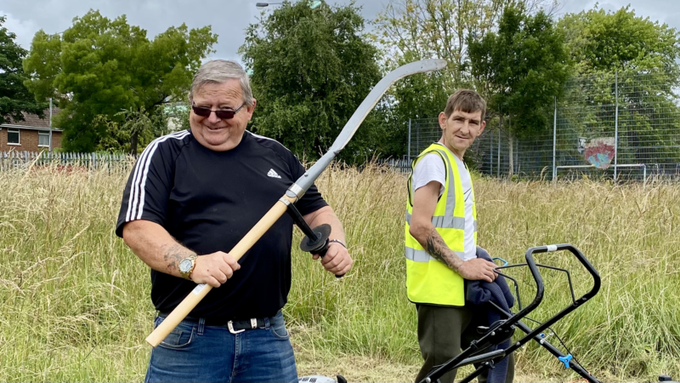
1) A resident of Knowle West in the southern suburbs of Bristol sees the urgent need for youth facilities in his neighbourhood and rather than waiting for Bristol City Council to pull their finger out, gets on with the job himself along with other people in the community: Man starts to create new youth facilities without permission 30.6.22.
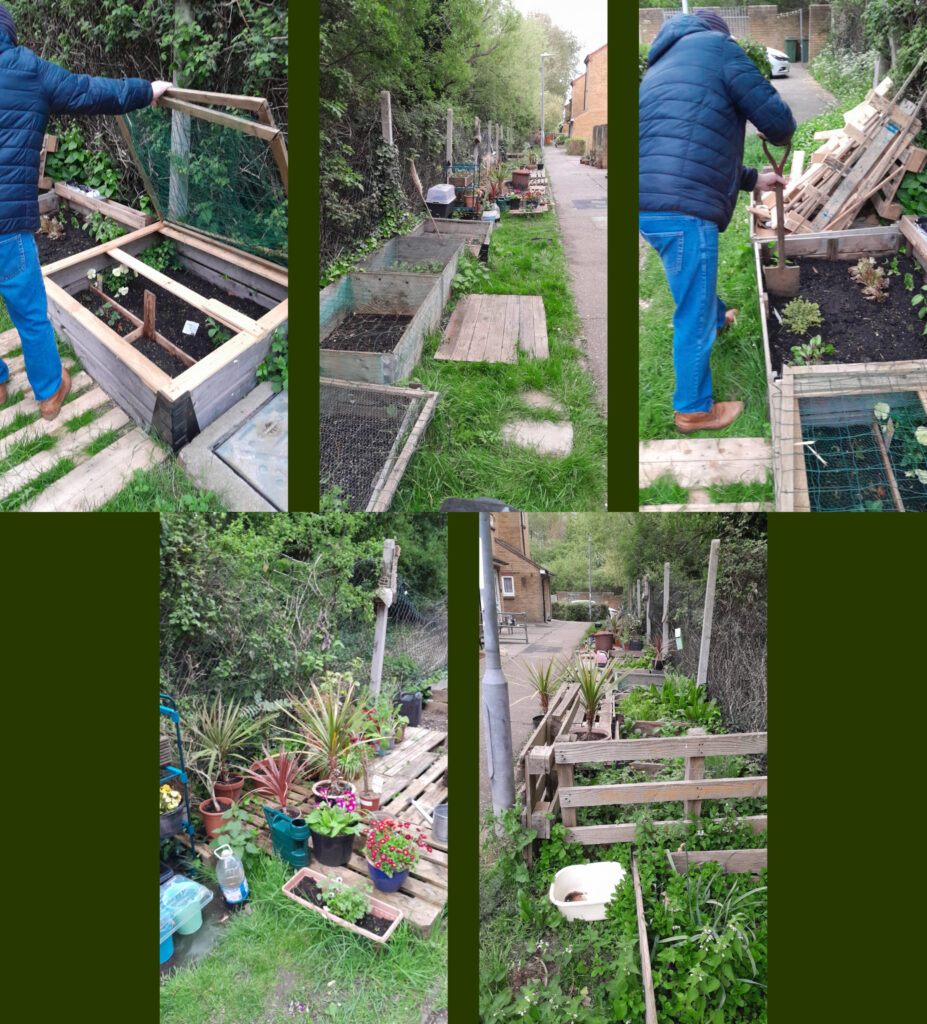
2) Residents on an estate in Laindon up by the A127 thought that when it comes to enhancing the open spaces around their blocks, they could do a lot better than Basildon Council. They created their own community garden where they grow vegetables to eat, cultivate decorative flowers and shrubs and have created an outdoor space to meet and socialise. The work of doing this and having somewhere to socialise is bringing people together and building the level of community solidarity we need in these troubled times. This is a brief write up of what they’re doing: Actually maintaining a community garden:) 27.4.22.
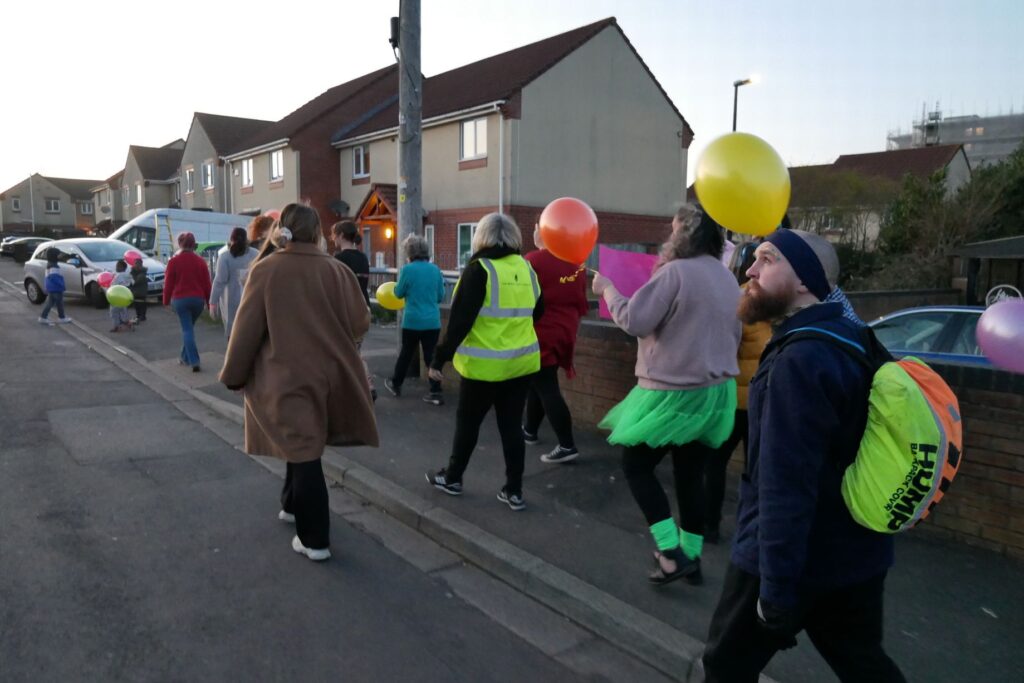
3) Hartcliffe is a series of estates on the southern fringe of Bristol. It’s an area that over the decades has had more than its fair share of problems. One of them is people, especially women, being afraid to go out at night because of the fear of large groups of mainly male youths hanging around in the streets and on open spaces. It should be pointed out that one reason the youths congregate as they do is the lack of any facilities and activities within easy travelling distance. That’s an explanation for the presence on the streets – it’s not in any way an excuse for the threatening and abusive behaviour that a minority of them engage in, particularly towards women. A point was reached where young women on the estate felt they had to take action so they called, mobilised and organised their own Reclaim The Night march: The girls who reclaimed the night in Hartcliffe 23.3.22. This was an estate led initiative, independent of any organisation.
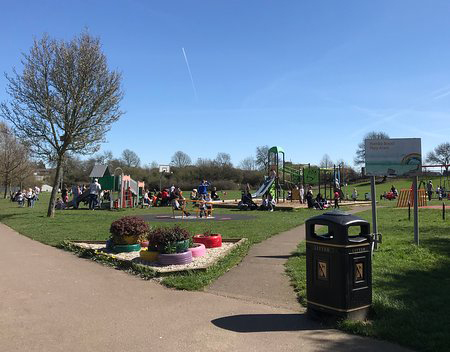
4) Hardie Park is in Stanford-le-Hope in the east of Thurrock. In a different political existence back in 2007/8 when I stood as an Independent Working Class Association candidate in the local elections in the Stanford East & Corringham Town ward, when I was door knocking in the vicinity of the park, residents would frequently bemoan the state of it. It was run down, a magnet for anti-social behaviour and a place residents went out of their way to avoid. A few years later, residents fed up with the continuing neglect of Hardie Park by Thurrock Council took matters into their own hands and organised a few litter picks. They had a positive response from the community and from that point things developed to the point where now, the park is run by the residents. The transformation from a no go area to a park with a cafe, meeting rooms, lovingly tended flower beds and a vegetable garden is an example of what determined locals who care about their community can achieve. Hardie Park is now a destination and a much loved community asset thanks to the dedication of many local volunteers.
These are just four examples – there are many, many more. All have varying degrees of what could be considered anarchy about them in that self organisation from the base is a common factor. For sure, none of them would pass an ‘anarchist purity test’ but the point is, they’re all about change at the grassroots as opposed to looking for approval from fellow activists. Another key point is that they took place independently of any movement or political organisation. All of these initiatives have the effect of empowering people. Each in their own way prompts people to think about the system that has failed to meet their needs. With some of them, it’s sparking thoughts of what more can be achieved by working at the base to bring about change.
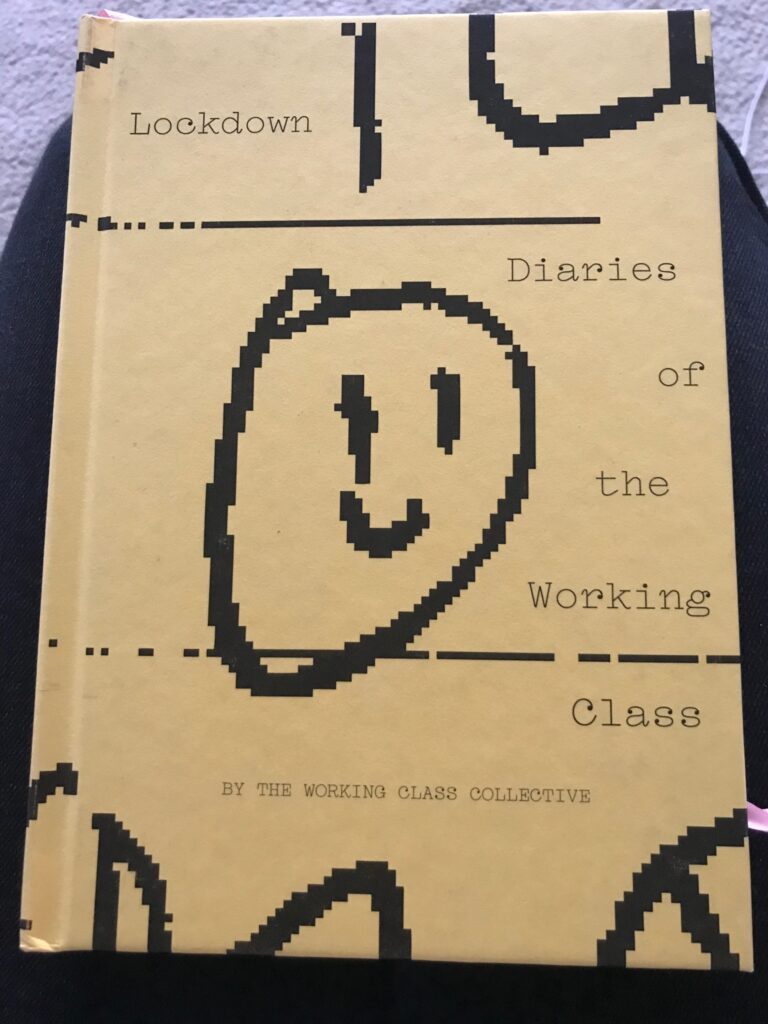
This is a bit of an aside as it’s not a local project but is an example of working class self organising well worth mentioning: Lockdown Diaries of the Working Class 6.6.22. In a nutshell, it’s a series of writings plus artworks from a range of people detailing their experiences of and expressing their feelings about the first part of the Covid lockdown in April 2020. Lockdown Diaries is an example of what working class people can put together when the motivation is there. It’s a collective, grassroots effort from the contributors to the diaries, the amazing illustrators, and the designers and typographers who put the book together. Publication was only possible because of the hundreds of working class people who put their hands into their pockets to donate money to cover the costs of paying the illustrators and designers, the printing and the distribution. It shows that we can bypass the big publishing houses and do it ourselves.
For details of how to buy a copy of Lockdown Diaries, go here: The Working Class Collective.
Returning to the themes of local action, here’s a quote from our favourite anarchist, Colin Ward, to get you thinking:
“The anarchist conclusion is that every kind of human activity should begin from what from what is local and immediate, should link in a network with no centre and no directing agency, hiving off new cells as the original grows.”
Anarchy in Action
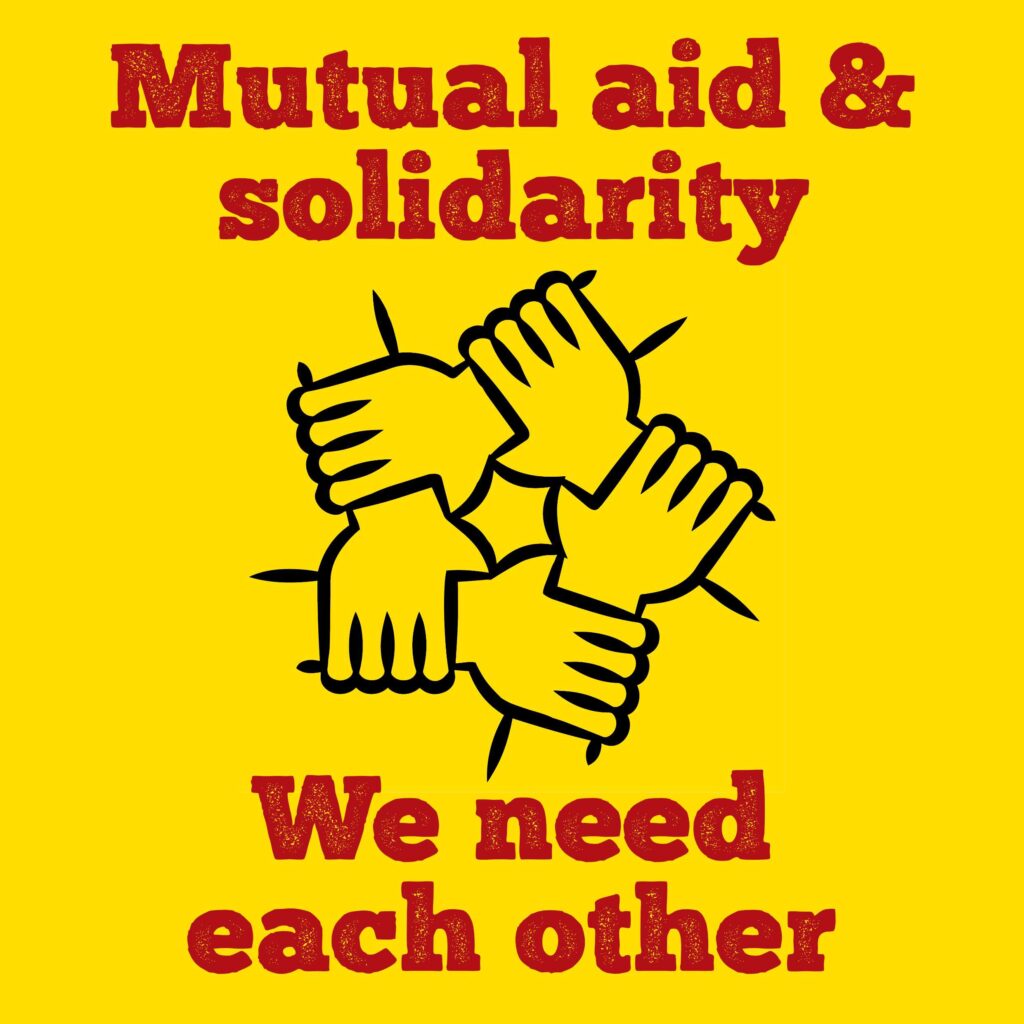
There is some debate as to whether Ward’s vision of anarchy is reformist as opposed to revolutionary: Colin Ward’s Anarchism – What Can We Learn from Colin Ward? – Wayne Price | The Anarchist Library. Ultimately there has to be a revolution in order to get rid of the power structures that dominate us and for people to be truly free. The question is, how do we get there?
We’ve been community activists in one form or another for a few decades now. As such, it’s no surprise that Ward’s vision of anarchy based on the local and immediate has great appeal to us. Our view is that it’s a bit of a false dichotomy to portray Ward’s anarchism as ‘reformist’. Here’s why we think that…
All of the examples we’ve cited above are in one way or another, about residents stepping in when local and national government have failed to meet their needs. They’re about people at the grassroots getting together to meet their own needs and articulate their concerns. A good part of them are about the potential to start building the new world we want to see in the decaying shell of the increasingly dystopian one we currently have to endure. A concept we’ve briefly written about here: Prefigurative action 2.2.2022.

Part of the process of revolution is developing a vision of the kind of society we want to live in and where possible, setting up initiatives that work towards realising that vision in the here and now. To see this as a gradualist, even reformist approach is mistaken. It’s about having as many autonomous grassroots initiatives in place as possible so that when the existing social, political and economic structures eventually collapse or are brought down, we have at least some of what we want ready to replace them. It’s also about ensuring that during the period of collapse and/or taking down, we have the grassroots social structures in place that will see us through the inevitable chaos.
You don’t need us to tell you that the society we currently endure is falling apart at the seams. Whether that’s a planned collapse in order to usher in an authoritarianism that will greatly benefit the elites but screw the rest of us as some people would have it, or on the other hand, sheer incompetence, is a matter for debate. The problem is we haven’t got the luxury of having a debate when things are falling apart around us – we need to get on with building what we need at the base to work towards and sustain the new society we want.

Going back to our examples, as we’ve already briefly mentioned, they come from the base upwards and have nothing to do with the anarchist movement or indeed, any other political organisation. They are proof that the seeds of change are already there and in a good few cases, are already healthily germinating. The movement for change already exists. As anarchists, we should be looking outwards to support these initiatives. Support and quite possibly, learn from them. In no way should anarchists seek to muscle in and take over. We hope there are anarchists sussed enough to realise that. Because at the end of the day, it’s about learning to trust ordinary people. If there are ‘anarchists’ who struggle to do that, then maybe they should reflect on what exactly their ‘anarchism’ means.
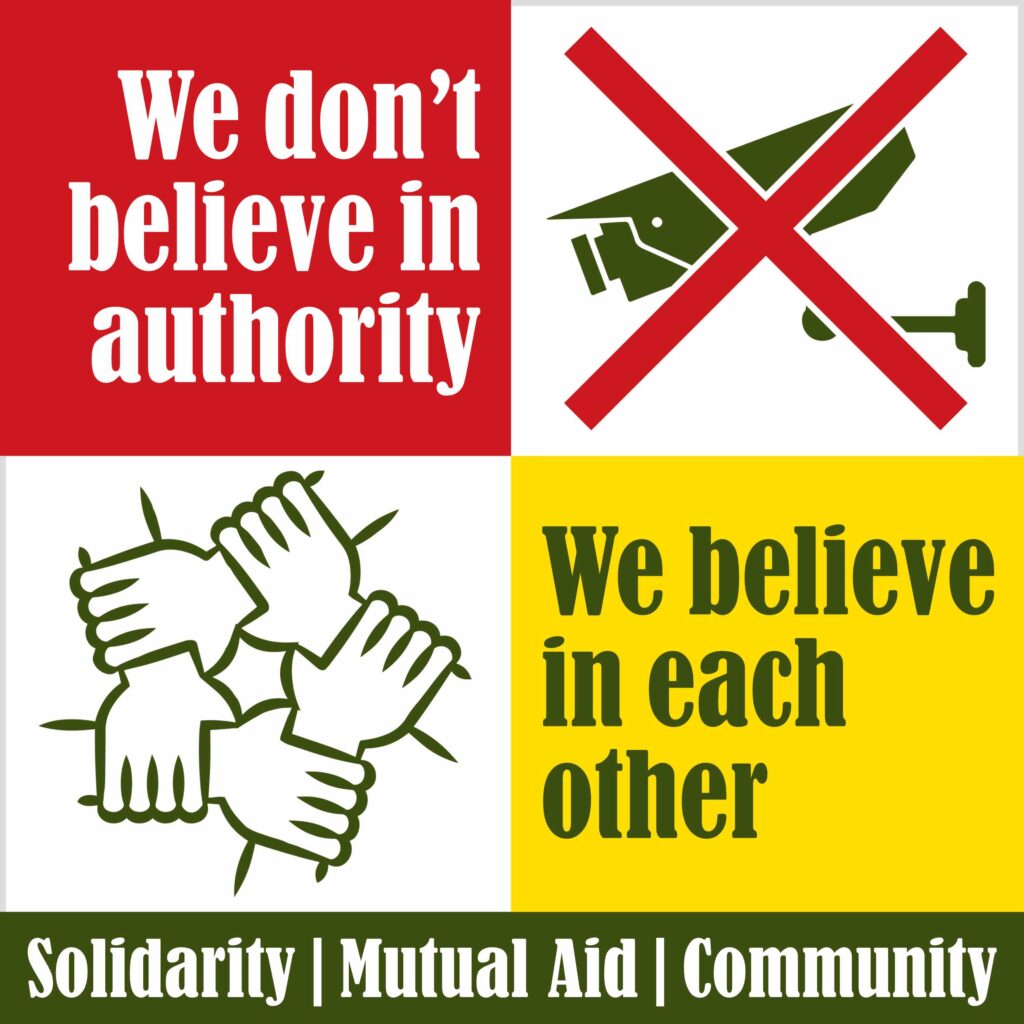
We hope that enough anarchists recognise the potential that’s out there and realise that anarchism has to be outward looking and something that will attract people. While we’re far from perfect, we’d like to think that by and large, our practice as anarchists has been outward looking. The problem is that, as regular readers of The Stirrer will be aware, what seems to pass for a movement these days, can feel more than a bit inward looking and exclusionary. It feels that even if you fail just one part of the purity test the movement unconsciously and sometimes consciously applies, you are cast out beyond the margins. That is pretty much what has happened to us with self appointed gatekeepers doing their level best to exclude us.
The thing is, we’re not bothered. Yes, it’s sad that what passes for a movement is behaving in an exclusionary way. However, given everything we’ve discussed in this piece and also in the ones we link to, we know that the desire and drive for change and a better world is NOT the property of the movement. That desire is a core part of what it means to be human. That desire is expressed in many ways across of whole range of grassroots community projects. Which is why, despite all of the doom and gloom surrounding us and the seemingly parlous state of the movement we once thought we belonged to, once we’ve taken a step back to look at the broader picture, we’re actually pretty optimistic about the future.
